Diving
Indonesia Liveaboard
Book in advance! Price starting from USD 2,890 / pers Check AvailabilityIndonesia Liveaboard
Indonesia is a diver’s paradise, home to some of the most diverse and abundant marine life in the world. Some of the diving areas in Indonesia are remote and difficult to reach which makes diving on an Indonesia liveaboard the only option for visiting. Most of the luxury liveaboard Indonesia will bring where you want to go.
Liveaboard diving trips offer the best way to experience Indonesia’s underwater world, as they allow divers to spend ample time exploring different locations without returning to shore every day. The most common liveaboard duration is the famous eight days seven, nights itinerary. Still, you can find up to 11 days and ten nights, especially for those furthest and most inaccessible diving areas, such as Serua in the Banda Sea.
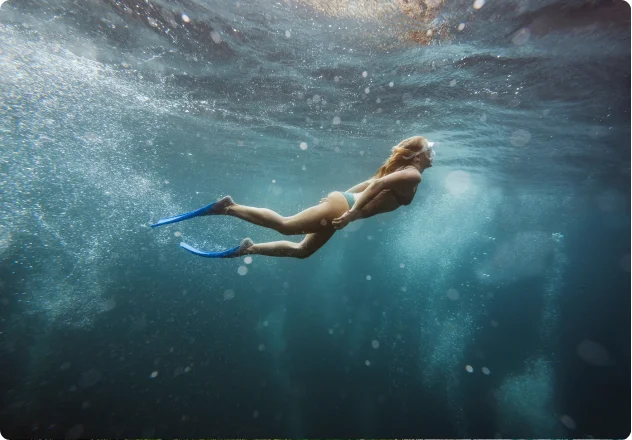
What are the top 3 Indonesia Liveaboard destinations?
The top liveaboard diving destinations in Indonesia are Komodo, Raja Ampat, and the Banda Sea, but without a doubt exploring beaten-track destinations is impressive such as Maumere, Alor, or Wakatobi. When choosing your liveaboard, ideally is to always consider one of the luxury liveaboards as they typically touch all the furthest dive sites.
Komodo
To fully immerse yourself in this underwater paradise, one of the best ways to explore the Komodo National Park is through a liveaboard diving adventure. A liveaboard is a floating hotel that allows divers to access remote dive sites inaccessible from land-based operations. These liveaboard trips typically range from 3 to 7 nights and offer a variety of diving experiences, including day and night dives, in addition to opportunities for other activities such as hiking and kayaking.
When choosing the best Liveaboard for your Komodo diving adventure, there are several factors to consider, such as the boat’s size, amenities, and level of service. Some of the top liveaboards in the region include the Mermaid I and II, which offer luxurious cabins and spacious decks for relaxation between dives, like the Damai I and II, which are known for their exceptional service and gourmet cuisine.
Other top liveaboard options in the region include the Siren Fleet, offering a range of diving itineraries and top-notch facilities, along with the Arenui, which provides a more intimate and personalized diving experience. Ultimately, the best Liveaboard for your trip will depend on your preferences and budget. Still, regardless of which option you choose, you will indeed have an unforgettable diving adventure in Komodo National Park.
Here are three must-do activities while visiting this unique destination:
.webp)
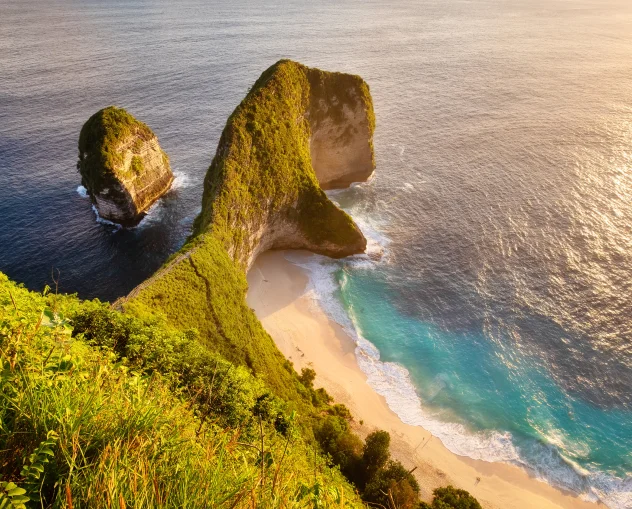
Observe Komodo dragons in their natural habitat
The primary reason people visit Komodo National Park in Indonesia is to see the world’s largest living lizard species, the Komodo dragon. Join a guided tour led by a park ranger, who will take you on a trek to observe these incredible creatures from a safe distance. The best time to spot them is in the early morning or late afternoon when they are most active.
Witnessing the Komodo dragons in their natural environment is a once-in-a-lifetime experience showcasing these ancient reptiles’ raw beauty. These remarkable creatures can grow up to 10 feet in length and weigh up to 150 pounds, exhibiting a unique combination of agility, strength, and stealth. As you walk around the park’s rugged terrain, you will learn about the dragons’ biology and behavior and their role in the local ecosystem. Moreover, your park ranger guide will share significant conservation efforts in place to protect the Komodo dragons and their habitat.
Book Now
Snorkeling and scuba diving
The underwater world of Komodo National Park in Indonesia is a treasure trove for snorkelers and divers alike, offering a rich biodiversity in its pristine marine ecosystems. The park is situated within the Coral Triangle, an area known for having the highest marine biodiversity on Earth, and its coral reefs are teeming with life. As you explore the depths, you’ll be enchanted by the kaleidoscope of colors and the mesmerizing array of fish, invertebrates, and marine mammals that call this underwater paradise home.
The strong currents in some areas of the park create the perfect conditions for drift diving, allowing you to glide along and observe the aquatic life effortlessly. The waters around the park offer excellent snorkeling and diving opportunities, with crystal-clear water plus a diverse array of marine species, including manta rays and sea turtles, and colorful coral reefs. Popular dive sites consist of Batu Bolong, Castle Rock, and Manta Point.
Book Now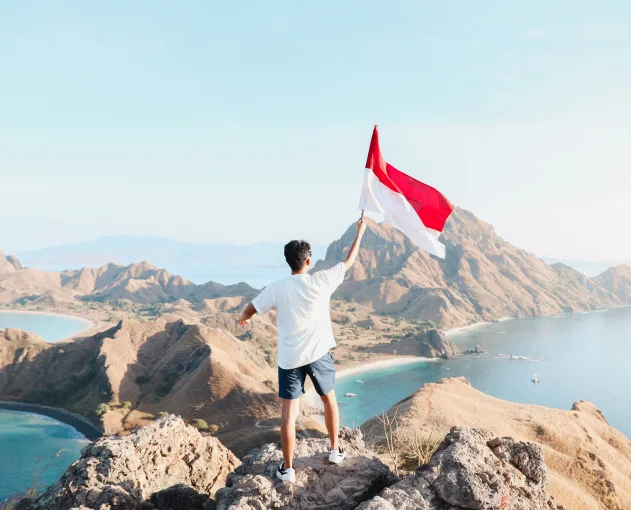
Explore the surrounding islands
Indonesia is home to many breathtaking destinations; Komodo National Park is undoubtedly one of them. This UNESCO World Heritage site is located in the eastern part of the country, in the province of East Nusa Tenggara. It spans over 1,700 square kilometers, including not only the islands of Komodo, Rinca, and Padar but also several smaller islands and their surrounding waters.
The national park is not only famous for its unique wildlife, such as the Komodo dragon but also for its stunning natural scenery. The islands are covered with dense forests, and numerous hiking trails lead to incredible viewpoints and waterfalls. Additionally, the waters surrounding the islands are home to some of the most diverse marine life in the world, making it a paradise for divers and snorkelers.
Visiting Komodo National Park is a truly unforgettable experience and a must-see destination for anyone traveling to Indonesia.

Sublime Subaquatic Adventures
Divers can explore fascinating underwater caves and swim through stunning archways, immersing themselves in a world that seems like something out of a fantasy. The crystal-clear waters provide excellent visibility, allowing divers to fully appreciate the intricate details and vibrant colors of the underwater ecosystem.
Scuba diving in Raja Ampat is not just about observing aquatic life but also about being immersed in the stunning natural scenery. The combination of vibrant coral reefs, impressive rock formations, and underwater caves creates a captivating environment for divers to explore. One of the highlights of diving in Raja Ampat is the opportunity to visit a manta ray cleaning station, where these graceful creatures gather to have parasites removed by smaller fish. Raja Ampat offers an abundance of breathtaking dive site, each with its own unique marine ecosystem and captivating underwater landscapes.
Raja Ampat
Indonesia’s Raja Ampat is not only a paradise for diving but also for birdwatching. The area is home to numerous species of birds, including the famous Birds of Paradise, which can be spotted in their natural habitat.
Apart from its natural beauty, Raja Ampat, located in the eastern part of Indonesia, is also rich in culture and history. The region is inhabited by the indigenous Papuan people, who have lived in harmony with the natural environment for centuries. Visitors can learn about their customs, traditions, and way of life by interacting with the locals and visiting traditional villages.
Overall, Raja Ampat in Indonesia is a unique and breathtaking destination that offers a one-of-a-kind experience for divers and nature lovers alike.
Here are three recommended activities to make the most of your visit:
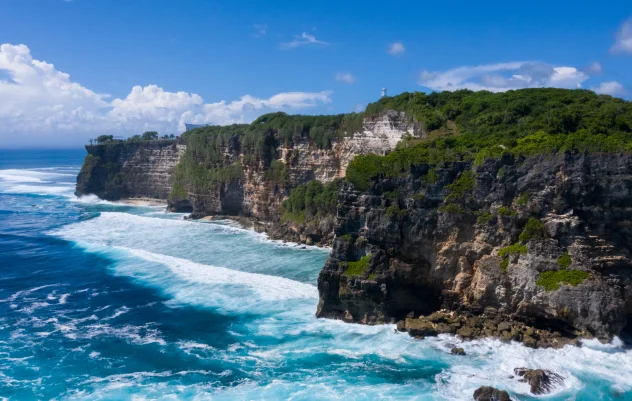
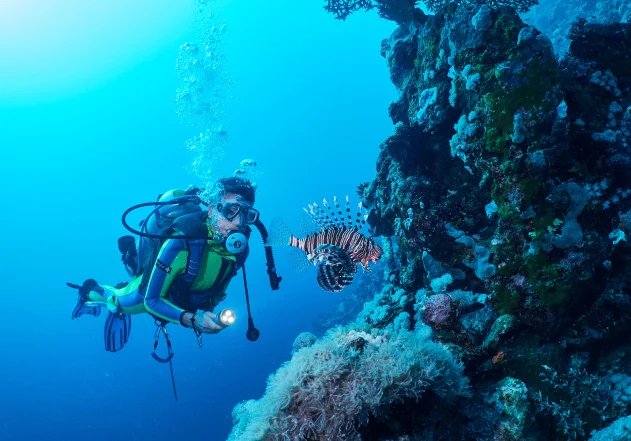
Diving and Snorkeling
Indonesia’s Raja Ampat archipelago is considered one of the world’s top diving and snorkeling destinations due to its incredible biodiversity, crystal-clear waters, and vibrant coral reefs. You’ll have the opportunity to see a wide variety of marine species, including manta rays, sharks, and turtles, as well as schools of colorful fish. Popular dive sites where any luxury liveaboard visits include Cape Kri, Blue Magic, and Manta Sandy.
Raja Ampat’s underwater landscape is a visual feast for divers and snorkelers. The archipelago features unique dive sites, from steep walls and caverns to underwater pinnacles and shallow coral gardens. Indonesia’s Raja Ampat’s nutrient-rich waters support a healthy ecosystem that nurtures both hard and soft coral formations, creating a breathtakingly colorful backdrop for your underwater adventures.
Book Now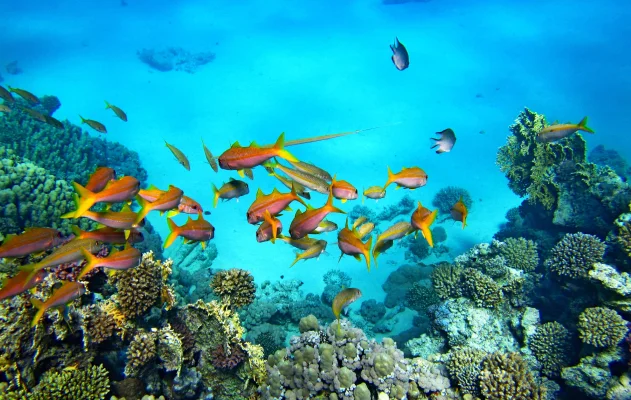
Island Hopping
With over 1,500 islands, Raja Ampat is perfect for exploration. Rent a boat or join a guided tour to visit various islands, each with its unique charm. Some notable spots to visit are Pianemo (also known as Little Wayag), Arborek Village, and Misool Island. Remember to take in the breathtaking panoramic views from the top of the limestone karsts.
Each island in Raja Ampat offers a unique experience, from pristine white sand beaches to lush tropical jungles. As you hop from one island to another, take the time to immerse yourself in the local culture by interacting with the friendly indigenous communities, who are known for their warm hospitality. Engage in traditional activities like weaving, cooking, or fishing, and learn about their customs and way of life.
Book Now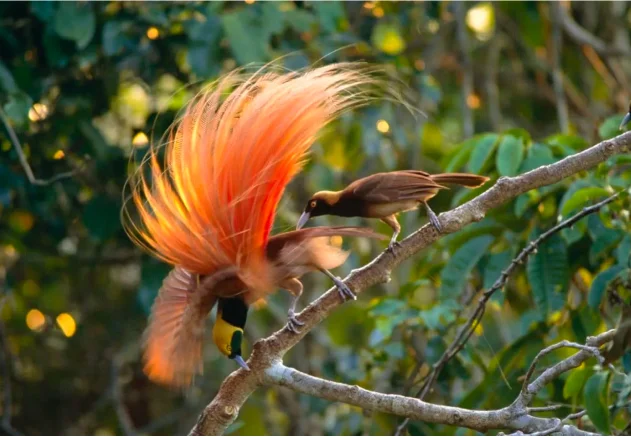
Birdwatching
Indonesia’s Raja Ampat archipelago boasts diverse ecosystems that support a wide range of birdlife, offering a unique experience for nature enthusiasts. Trekking through the verdant jungles of Indonesia may also lead to encounters with various parrots, kingfishers, and honeyeaters. Engaging a local guide not only helps you locate and identify these captivating birds but also provides valuable insights into their behavior and habitat.
As you immerse yourself in the serene environment, remember to bring binoculars and a camera to capture these unforgettable moments. Embrace the natural beauty of Indonesia’s Raja Ampat, allowing its avian wonders to leave a lasting impression.
Remember to respect the local environment and culture during your visit to Raja Ampat, Indonesia, always following sustainable tourism practices.
Banda Sea
Located in the Moluccas, the region is renowned for its remote and unspoiled underwater locations, which offer unparalleled diving experiences. The area is particularly famous for the seasonal migration of Hammerhead sharks, where divers can witness hundreds of these majestic creatures swimming together. Top destinations for diving enthusiasts include Banda Besar, Hatta Island, Suanggi, and Ai Island.
The Hammerhead sharks are the main attraction, while the waters surrounding the Banda Islands have stunning coral reefs, which provide unique dive sites for macro photography divers. In addition, White Tip, Grey Tip Sharks, and the amazing Thresher Shark can be seen here.
Furthermore, the region boasts a rich history, with colonial-era forts and spice plantations offering a glimpse into the past. Overall, the Banda Islands provide a unique and unforgettable diving experience for those looking to explore Indonesia’s less-traveled dive sites, encountering some of the ocean’s most awe-inspiring creatures.
Here are three popular things to do in the area:
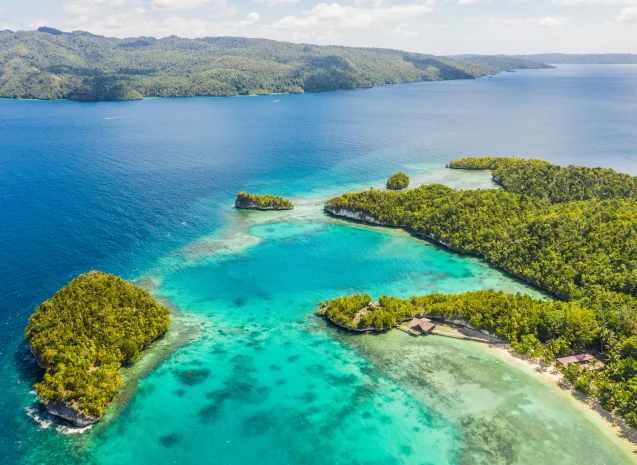
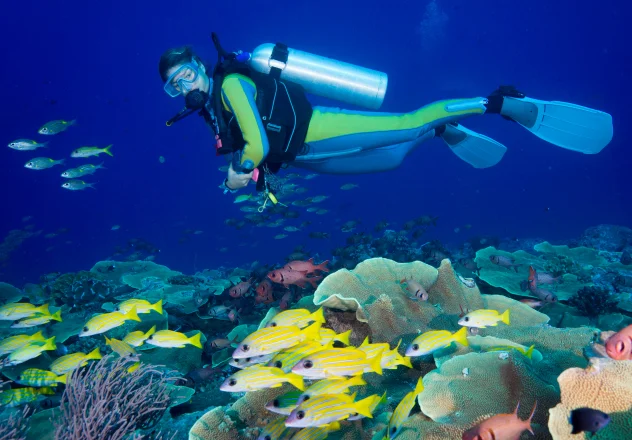
Scuba Diving and Snorkeling
It is renowned for its rich marine life, pristine coral reefs, and crystal-clear waters, making it an ideal destination for diving and snorkeling enthusiasts. Some popular dive sites include Gunung Api, known for its sea snakes, and the Banda Islands, where you can explore the vibrant coral gardens and swim with various marine species like turtles, reef sharks, and manta rays.
Book Now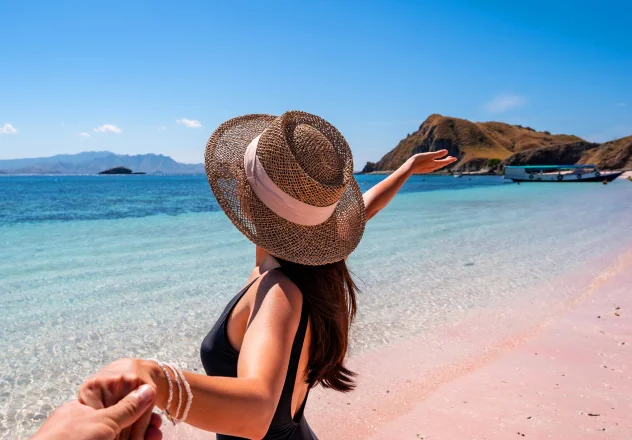
Explore Island
The Banda Sea is home to numerous islands, each with its unique charm, history, and natural beauty. Island hopping is a great way to explore the area and experience the region’s diverse cultures. Key islands to visit include Banda Neira, Banda Besar, and Pulau Ai. Additionally, you can visit the historical Fort Belgica, which offers stunning views of the surrounding islands.
Island hopping in the Banda Sea also provides an opportunity to learn about the region’s rich history and significance during the Spice Trade. The islands were once the world’s sole source of nutmeg and mace, which attracted European traders and led to a turbulent past. Moreover, as you explore, you’ll find remnants of colonial architecture, ancient forts, and historical museums that offer a glimpse into the area’s past. Additionally, local cuisine is another highlight, as you’ll have the chance to sample delicious dishes that blend Indonesian and Dutch influences.
Book Now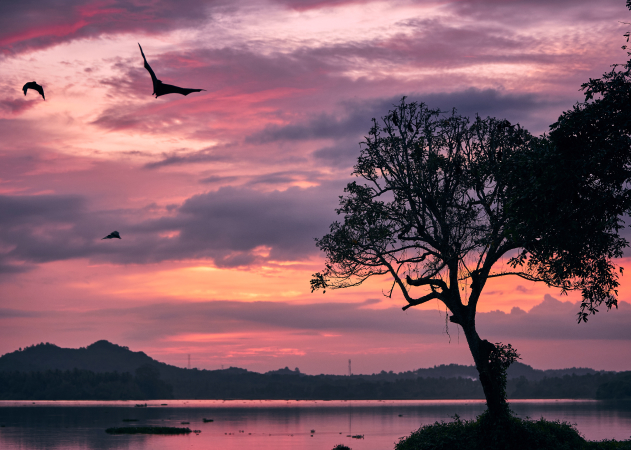
Wildlife and Bird Watching
The diverse ecosystems of the islands, ranging from lush tropical rainforests to mangroves and coastal areas, support a high degree of biodiversity. A visit to the remote Tanimbar Islands can reward you with sightings of the critically endangered Tanimbar Corella. At the same time, the Aru Islands are a paradise for birdwatchers seeking to spot endemic species like the Aru Boobook and the Aru Shrike-thrush. Guided tours and birdwatching excursions led by knowledgeable local guides can help maximize your chances of spotting these exclusive creatures.
Furthermore, the area offers a unique underwater experience that combines adventure with relaxation. The area is also known for its abundance of pelagic fish and large marine animals, such as hammerhead sharks, whale sharks, and dolphins, providing divers with a chance to witness these majestic creatures up close. Additionally, the Banda Sea’s remote location ensures that many of its dive sites still need to be more organized and crowded, enabling you to immerse yourself in the beauty of the underwater world fully.
Book NowWhat do I need to know about scuba diving in Indonesia?
Know the best time to dive in Indonesia
Regarding diving in Indonesia, the country offers some of the world’s most diverse and spectacular dive sites. With over 17,000 islands, Indonesia boasts an incredible range of underwater landscapes and marine life. From the stunning coral reefs of Bali and the Gili Islands to the famous manta rays of Nusa Penida, and the unique marine biodiversity of Raja Ampat, Indonesia has something for every diver. Whether you are a beginner or an experienced diver, Indonesia’s warm waters and thriving ecosystems make it an excellent destination for your next diving adventure.
As water temperatures in Indonesia can differ based on the season and the specific diving location, it’s crucial to bring suitable equipment appropriate for the prevailing conditions. For example, while the water temperature in Komodo is generally warm throughout the year, Raja Ampat’s water temperature can vary from excellent to warm depending on the time of the year. By researching the optimal diving season in a specific region and packing accordingly, divers can maximize their comfort and enjoyment of their diving experience in Indonesia.
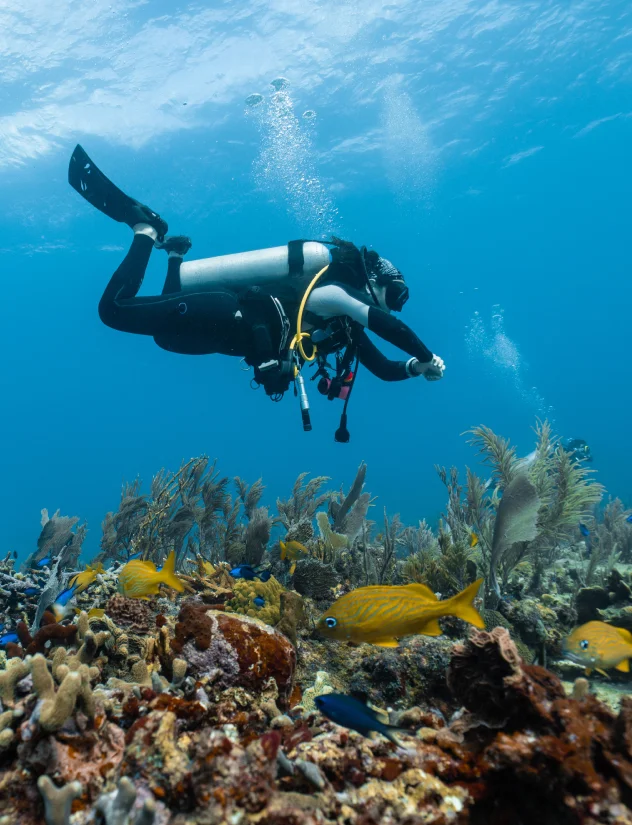
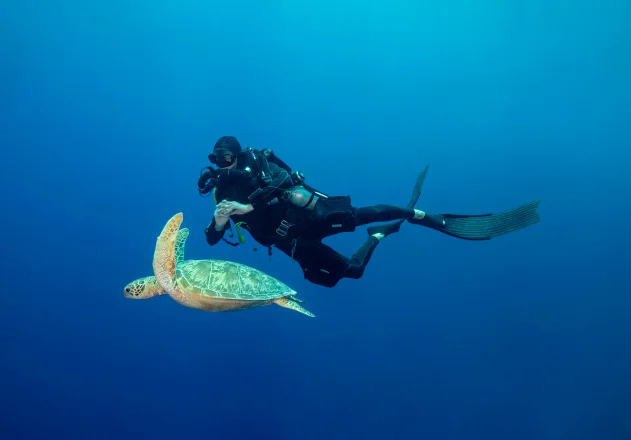
Know your diving certification requirements
Diving is always based on the experience of the diver as well as their certification level. Considering the level of experience required when planning a liveaboard diving trip in Indonesia is essential. All liveaboard companies require a minimum of advanced open water certification with at least 25 logged dives. It’s essential to research the specific requirements of each trip and to make sure you are appropriately certified for the diving you will be doing, as some dive sites pack strong front and down currents unsuitable for beginner divers.
Know what to bring on a Indonesia liveaboard
A liveaboard trip is unique because you live on the vessel for several days, a week, or even more. Personal belongings and hygiene products such as a toothbrush and toothpaste are must-haves. While most liveaboard vessels provide basics such as face and bath towels, it is wise to bring your own shampoo and shower gel.
If you have any personal dive equipment, it’s always good to bring it on the trip. Liveaboard vessels provide rental dive equipment at an extra cost with or without a dive computer.
And last, pack enough clothes during the trip or check with Liveaboard if they provide laundry services. Water supply is limited on liveaboards, and some vessels are not equipped with water maker systems.

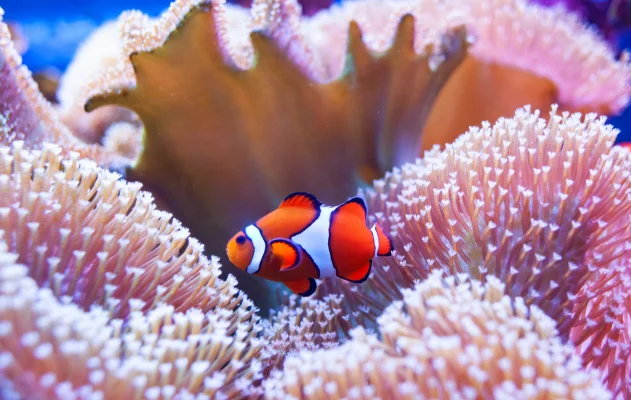
How to choose your Indonesia liveaboard
Indonesia has over 100 liveaboard vessels of different sizes, all providing identical itineraries. Choosing the right Liveaboard for you, it’s paramount for comfort, safety, and the fun it should bring.
Whether you choose to book the trip with an online travel agent such as Neptune Liveaboard, there are a few elements you must check first:
the vessel technical information: tonnage, nr of cabins, water supply.
Vessel safety features: life rafts, GPS, Diver GPS, etc.
Photos of the vessel and the cabins.
Above all, the reviews are king and should be the base for the final decision. Reviews never lie, and you should check online travel agents with Google or TripAdvisor.
Final thoughts on Indonesia Liveaboard
Indonesia offers some of the best diving in the world, and liveaboard diving trips provide an unparalleled way to experience the country’s diverse marine life. Whether diving in Komodo, Raja Ampat, or the Banda Sea, divers can expect to encounter a wide variety of marine life and healthy coral reefs, making Indonesia a top destination for diving enthusiasts.
A trip on board a vessel in Indonesia offers an opportunity to experience the country’s unique blend of adventure, culture, and relaxation, making it an incredible destination not only for divers but also for non-divers. Visitors can explore picturesque beaches, lush jungles, and historic temples and immerse themselves in the vibrant local arts and cuisine. Whether traveling solo, with friends, or as a family, a voyage on a boat in Indonesia provides unparalleled diving opportunities, breathtaking landscapes, and warm hospitality, making it a must-visit destination for any traveler seeking a truly unforgettable experience.
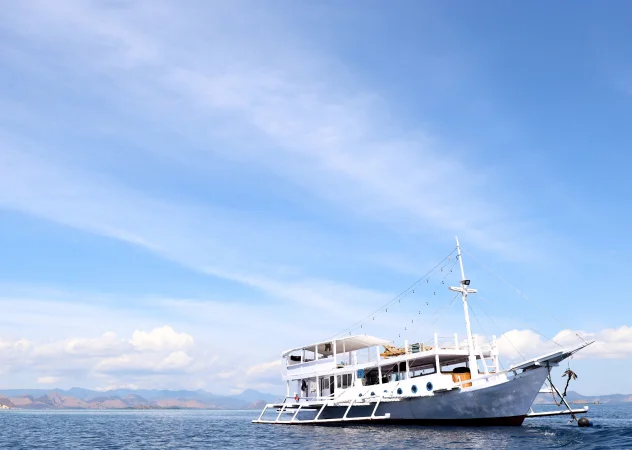

Sustainability in Indonesian Liveaboard Diving
As diving tourism continues to grow in Indonesia, it’s essential to consider its impact on the marine environment. Responsible liveaboard operators are taking steps to minimize their ecological footprint and promote sustainable practices, such as reducing plastic waste, supporting local conservation efforts, and educating guests on responsible diving practices.
By adopting eco-friendly practices like using biodegradable cleaning products, implementing waste management systems, and supporting local conservation efforts, operators of floating homes are not only preserving the marine environment but also ensuring its long-term sustainability. Additionally, educating guests on responsible diving practices, which include avoiding contact with coral reefs and refraining from disturbing marine life, is an essential component of sustainable floating home living. Through collaboration to protect the marine ecosystem, operators of floating homes and residents can help preserve the natural beauty and biodiversity of Indonesia’s underwater world for generations to come.
Planning Your Indonesian Liveaboard Trip
With so many liveaboard options available in Indonesia, planning a trip can be overwhelming. Factors to consider include:
Working with a reputable travel agent or dive operator can help ensure your liveaboard experience meets your expectations.
Capturing the Perfect Underwater Shot on Your Indonesian Liveaboard Trip
With its stunning underwater landscapes and diverse marine life, Indonesia offers ample opportunities for underwater photography. However, capturing the perfect shot requires careful planning, the right equipment, and knowledge of underwater photography techniques. Many liveaboard operators offer photography-focused trips led by experienced professionals to help guests improve their skills.
By dedicating adequate effort to prepare and equip themselves properly, photographers can capture stunning images of Indonesia’s underwater world and create lasting memories of their experience living aboard a vessel.

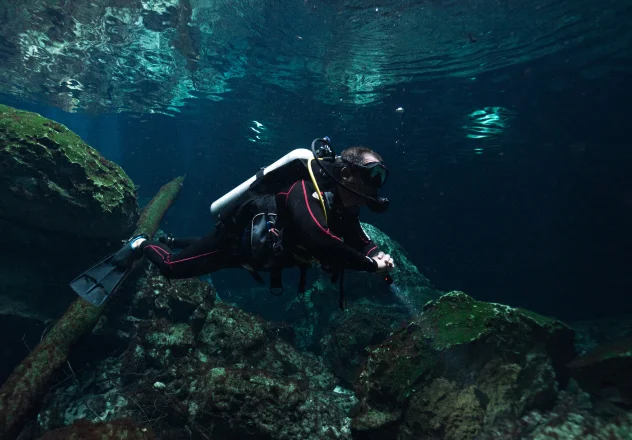
Diving Safety on Indonesian Liveaboards
As with any diving trip, safety should be a top priority on Indonesian liveaboards. Liveaboard operators should have safety protocols in place and provide guests with safety briefings and equipment checks before each dive. Divers should also ensure they have the necessary training and experience to handle the conditions of the dive sites they plan to visit.
By being prepared, attentive, and cautious, divers can help ensure their safety and the safety of others on board while enjoying incredible and unforgettable liveaboard diving in Indonesia.
Exploring Indonesia Beyond Liveaboard Diving
Indonesia’s diverse marine ecosystems boast an impressive array of marine life, including manta rays, whale sharks, reef sharks, turtles, and countless species of colorful fish and coral. Some of the best liveaboard diving in Indonesia include Raja Ampat, Komodo National Park, and the Lembeh Strait. These areas offer some of the best diving opportunities in the world, with crystal-clear waters and diverse marine life. All scuba divers should at least one time visit Indonesia.
There are plenty of other ways to experience Indonesia’s underwater beauty, such as snorkeling, freediving, and scuba diving from shore. Indonesia’s coastlines are dotted with stunning beaches and world-class dive resorts that offer easy access to the country’s vibrant underwater ecosystems.
No matter how you choose to explore Indonesia’s natural wonders, it’s important to remember that responsible tourism is vital to preserving the country’s unique environment and culture. By choosing eco-friendly and socially responsible operators, you can ensure that your trip benefits the local communities and the natural environment.
It offers a truly unforgettable experience that combines the thrill of underwater exploration with the beauty of Indonesia’s natural landscapes and cultural richness.
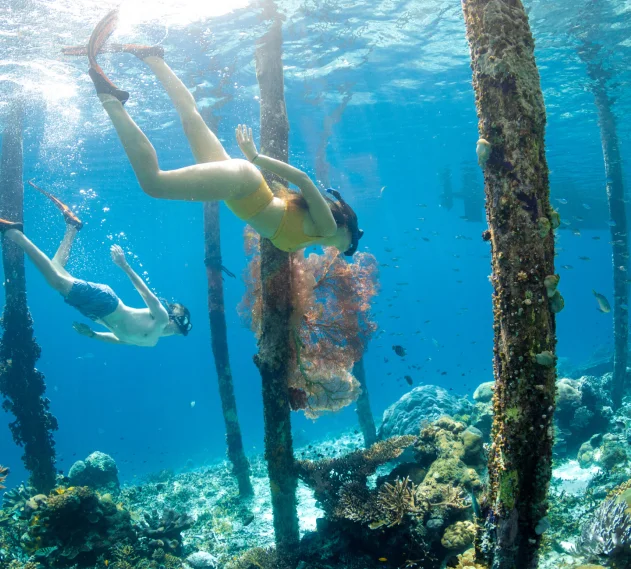
Frequently Ask Question
Everything you need to know about the product and billing. Can’t find the answer you’re looking for? Please chat to our friendly team.
See More FAQsWhen is the best time to dive in Indonesia?
Komodo - April to August
Banda Sea - September to October
Raja Ampat - November to March